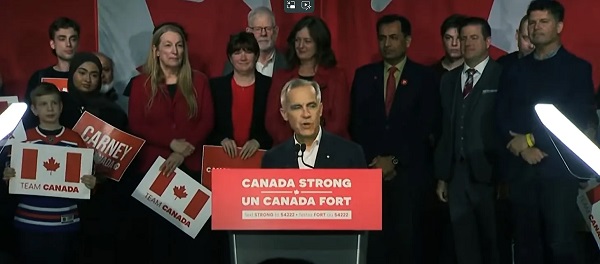Economy
Federal government’s fiscal plan raises red flags
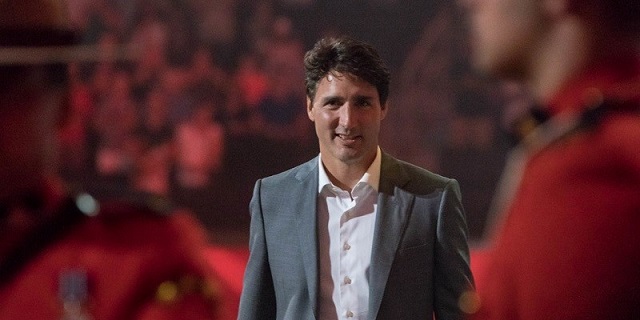
From the Fraser Institute
By Jason Clemens, Jake Fuss and Grady Munro
The Trudeau government recently released its fiscal update, which provides revised estimates of spending, taxing and borrowing. A careful examination of the update raises several red flags about the state of Canada’s national finances.
First, some analyses raised concerns about the state of federal borrowing, which are well founded. While the government downplays the level of potential borrowing over the six years covered in the fiscal update, the projected deficit—that is, the amount of spending in a specific year in excess of the amount of revenues—will reach $40.0 billion this year (2023-24) and $38.4 billion next year. However, the estimate for next year does not include the national pharmacare plan that the Trudeau government has agreed to as part of its governing agreement with the NDP.
The Parliamentary Budget Officer (PBO) estimated that a national pharmacare plan modelled on the Quebec system would cost $11.2 billion in 2024-25 (the provinces would likely cover some of this). The 2019 report of the Advisory Council on the Implementation of National Pharmacare, better known as the Hoskins Commission, estimated that a national pharmacare program would cost $15.3 billion in 2027.
Consequently, if the government introduces national pharmacare next year, without any offsetting reduction in other spending and/or meaningful tax increases, the deficit for 2024-25 would reach $49.6 billion, not the reported $38.4 billion. The higher borrowing needed to finance pharmacare continues each and every year, meaning that the overall level of federal debt would also increase.
A second red flag, which the fiscal update ignored, relates to Canada meeting its international commitment for defence spending. Canada is a party to the NATO agreement calling on member countries to spend 2.0 per cent of GDP on national defence. In 2022, Canada spent just 1.3 per cent of GDP on defence. According to the PBO, for the federal government to meet its NATO spending obligations next year (2024-25), it must spend an additional $14.5 billion. That means annual borrowing could be as high as $64.1 billion if both additional defence and pharmacare spending were financed entirely by new borrowing.
And there are legitimate reasons to believe the government would not raise taxes to finance a new pharmacare program. According to polling data in 2022, 79 per cent of survey respondents supported a new national pharmacare program—but support plummeted to just 40 per cent when the new hypothetical program was financed by higher taxes, specifically a higher GST.
That brings us to the third red flag. The total national debt will reach a projected $2.1 trillion next year (excluding the additional potential spending and borrowing noted on pharmacare and defence) and the interest costs on that debt are expected to reach $52.4 billion. For reference, the total national debt stood at $1.1 trillion in 2015-16 when the Trudeau Liberals took office.
By 2028-29, the last year included in the fiscal update, the federal government expects interest costs to reach $60.7 billion. That’s only slightly less than total planned health-care spending by Ottawa for the same year ($62.9 billion). And this is actually a conservative estimate since it excludes potential higher borrowing for programs such as pharmacare and thus higher debt levels. It also ignores any possibility of a downgrading in the ratings for Canada’s debt, which would result in higher interest costs. And it ignores the risk of an economic slowdown or recession that would further increase borrowing and ultimately debt interest costs.
While the federal government, particularly the prime minister and his finance minister, continue to describe their stewardship of federal finances as prudent and responsible, close examination of their fiscal update reveals that federal finances may soon deteriorate from their already worrying position.
Authors:
2025 Federal Election
Canada drops retaliatory tariffs on automakers, pauses other tariffs
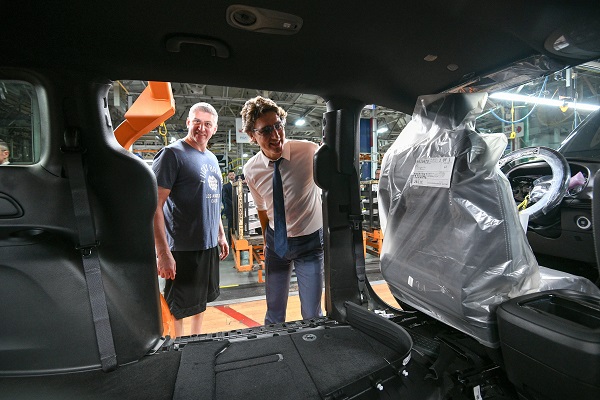
 MxM News
MxM News
Quick Hit:
Canada has announced it will roll back retaliatory tariffs on automakers and pause several other tariff measures aimed at the United States. The move, unveiled by Finance Minister François-Philippe Champagne, is designed to give Canadian manufacturers breathing room to adjust their supply chains and reduce reliance on American imports.
Key Details:
- Canada will suspend 25% tariffs on U.S. vehicles for automakers that maintain production, employment, and investment in Canada.
- A broader six-month pause on tariffs for other U.S. imports is intended to help Canadian sectors transition to domestic sourcing.
- A new loan facility will support large Canadian companies that were financially stable before the tariffs but are now struggling.
Diving Deeper:
Ottawa is shifting its approach to the escalating trade war with Washington, softening its economic blows in a calculated effort to stabilize domestic manufacturing. On Tuesday, Finance Minister François-Philippe Champagne outlined a new set of trade policies that provide conditional relief from retaliatory tariffs that have been in place since March. Automakers, the hardest-hit sector, will now be eligible to import U.S. vehicles duty-free—provided they continue to meet criteria that include ongoing production and investment in Canada.
“From day one, the government has reacted with strength and determination to the unjust tariffs imposed by the United States on Canadian goods,” Champagne stated. “We’re giving Canadian companies and entities more time to adjust their supply chains and become less dependent on U.S. suppliers.”
The tariff battle, which escalated in April with Canada slapping a 25% tax on U.S.-imported vehicles, had caused severe anxiety within Canada’s auto industry. John D’Agnolo, president of Unifor Local 200, which represents Ford employees in Windsor, warned the BBC the situation “has created havoc” and could trigger a recession.
Speculation about a possible Honda factory relocation to the U.S. only added to the unrest. But Ontario Premier Doug Ford and federal officials were quick to tamp down the rumors. Honda Canada affirmed its commitment to Canadian operations, saying its Alliston facility “will operate at full capacity for the foreseeable future.”
Prime Minister Mark Carney reinforced the message that the relief isn’t unconditional. “Our counter-tariffs won’t apply if they (automakers) continue to produce, continue to employ, continue to invest in Canada,” he said during a campaign event. “If they don’t, they will get 25% tariffs on what they are importing into Canada.”
Beyond the auto sector, Champagne introduced a six-month tariff reprieve on other U.S. imports, granting time for industries to explore domestic alternatives. He also rolled out a “Large Enterprise Tariff Loan Facility” to support big businesses that were financially sound prior to the tariff regime but have since been strained.
While Canada has shown willingness to ease its retaliatory measures, there’s no indication yet that the U.S. under President Donald Trump will reciprocate. Nevertheless, Ottawa signaled its openness to further steps to protect Canadian businesses and workers, noting that “additional measures will be brought forward, as needed.”
Business
DOGE Is Ending The ‘Eternal Life’ Of Government
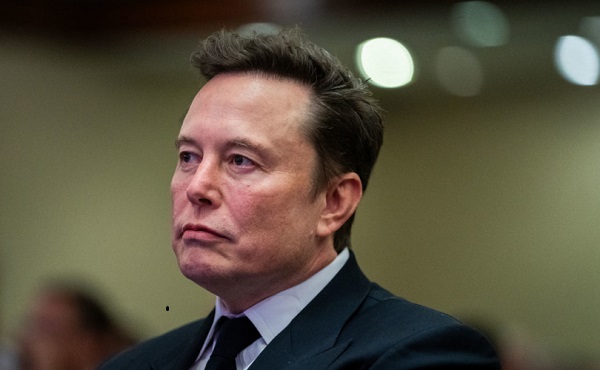

From the Daily Caller News Foundation
By David Bossie
In his 1964 “A Time For Choosing” speech, Ronald Reagan famously said, “a government bureau is the nearest thing to eternal life we’ll ever see on this earth.” And for more than 60 years, President Reagan’s words have proven to be true. However, with the historic re-election of President Donald Trump and the creation of the Department of Government Efficiency (DOGE) under the leadership of Elon Musk, the Gipper’s contention is finally being challenged – and not a moment too soon.
The Trump Administration inherited a horribly bloated federal government in dire need of common sense streamlining from top to bottom. For decades, the executive branch has expanded at an incomprehensible rate and along with it, so has waste, fraud, and abuse. Presidents on both sides of the aisle have made promises to tighten the government’s belt, shrink the bureaucracy, and return power to the people where it belongs. Those efforts for the most part – however well-intentioned – never got off the ground. The reality is that when politicians have been forced to choose between a legislative priority and cutting government spending, cuts are always the first casualty. But currently, with our $36 trillion national debt spiraling out of control, reining in the size and scope of government is no longer a choice, but a necessity.
President Trump is the perfect leader for these trying times. He’s battletested and fears nothing – and no challenge is too large. Whether it’s securing the border, growing the economy, forging peace in Ukraine and the Middle East, or negotiating fair trade deals, this president is on a mission to save America. And if any chief executive is going to have success at deconstructing the administrative state, it’s Trump the steel-spined change agent. The shadowy deep state doesn’t scare him, the biased liberal media can’t intimidate him, and this time there are no phony partisan investigations aiming to sidetrack him. Trump made a promise to bring fiscal responsibility back to governing, and along with Musk and DOGE, they’re finally conducting the “audit with teeth” that the American people have been waiting for, and their hard work is turning out to be infectious.
Dear Readers:
As a nonprofit, we are dependent on the generosity of our readers.
Please consider making a small donation of any amount here. Thank you!
With each passing day, a different member of the cabinet is announcing a new cut, discovering a duplicative program, or updating an antiquated system to steer us away from the fiscal cliff that’s rapidly approaching. When the president also happens to be a highly successful businessman, making the business operate more smoothly and for less money is the name of the game. Trump has brought this mindset to the White House and according to recent polling 77 percent favor a full review of government spending.
President Trump is going back to the basics that have become taboo in Washington, like asking fundamental questions about whether an agency has been successful in its mission or if a program is still necessary. In the case of the Education Department, Trump sees an emergency and is not willing to kick the can down the road any longer. The president believes that education excellence for our children is essential so America can compete for generations to come. Drastic reform is long overdue and that means moving education decisions back to state and local officials – and parents. That’s why President Trump is taking the steps to confront the failed status quo and close the underperforming department so we can turnaround lackluster public schools and low-test scores.
Similarly, with the decision to end USAID and slash foreign aid, Trump and DOGE are simply putting America first. America is handing out billions upon billions in taxpayer dollars around the globe on programs that should be spent on fixing our own domestic problems. The plan to decentralize and modernize the Agriculture Department is another great example of thinking outside the box. The American people understand the rationale that downtown Washington, D.C. is the last place decisions about farming should be made. Relocating the department to various hubs around the heartland is common sense.
Additionally, the announcement that the Department of Health and Human Services will cut 20,000 full-time employees is part of President Trump’s vision to “right-size the federal government and unleash the private sector again” in the words of Treasury Secretary Scott Bessent. And word that the Trump Administration is planning to work with Congress to finally defund National Public Radio and the Public Broadcasting Service is welcome news to millions of Americans who believe sending taxpayer funds to biased news outlets is wrong.
DOGE is also doing courageous work at the Social Security Administration (SSA). The amazing efforts to identify individuals who are either deceased, in the country illegally, or otherwise ineligible will help stave off the program’s insolvency, which experts predict is only ten years away. When a DOGE official disclosed that 40 percent of the calls made to SSA are from would-be fraudsters trying to exploit the system, it’s become all too obvious that new safeguards must be adopted.
When it comes to the question of how much money DOGE will ultimately end up saving taxpayers, in the context of our $36 trillion debt crisis, the more the better. However, the overall change in mindset – forcing government to operate efficiently and responsibly like businesses and families – and passing that mindset onto future administrations is perhaps the most critical shift that can be made. In fact, in an ideal scenario, every state, county, and city would have its very own DOGE operation. We must get serious about cutting government waste now or we’ll go bankrupt. That’s just the reality of the situation and President Trump knows it.
David Bossie is the president of Citizens United and served as a senior adviser to the Trump-Pence 2020 campaign. In 2016, Bossie served as deputy campaign manager for Donald J. Trump for President and deputy executive director for the Trump-Pence Transition Team.
-

 2025 Federal Election2 days ago
2025 Federal Election2 days agoRCMP Whistleblowers Accuse Members of Mark Carney’s Inner Circle of Security Breaches and Surveillance
-
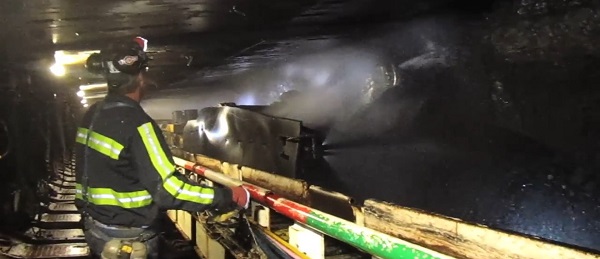
 Daily Caller18 hours ago
Daily Caller18 hours agoTrump Executive Orders ensure ‘Beautiful Clean’ Affordable Coal will continue to bolster US energy grid
-

 Business20 hours ago
Business20 hours agoChina, Mexico, Canada Flagged in $1.4 Billion Fentanyl Trade by U.S. Financial Watchdog
-

 2025 Federal Election2 days ago
2025 Federal Election2 days agoBureau Exclusive: Chinese Election Interference Network Tied to Senate Breach Investigation
-
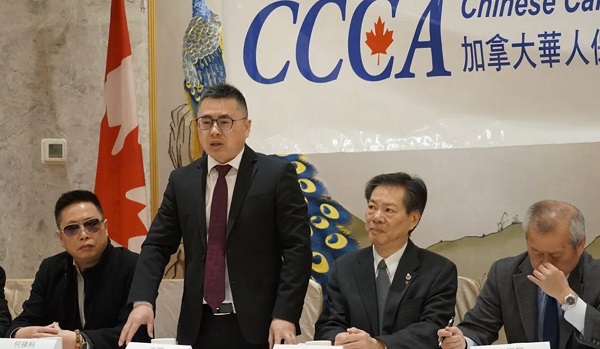
 2025 Federal Election19 hours ago
2025 Federal Election19 hours agoBREAKING from THE BUREAU: Pro-Beijing Group That Pushed Erin O’Toole’s Exit Warns Chinese Canadians to “Vote Carefully”
-

 2025 Federal Election1 day ago
2025 Federal Election1 day agoTucker Carlson Interviews Maxime Bernier: Trump’s Tariffs, Mass Immigration, and the Oncoming Canadian Revolution
-

 2025 Federal Election17 hours ago
2025 Federal Election17 hours agoAllegations of ethical misconduct by the Prime Minister and Government of Canada during the current federal election campaign
-

 COVID-1914 hours ago
COVID-1914 hours agoTamara Lich and Chris Barber trial update: The Longest Mischief Trial of All Time continues..






